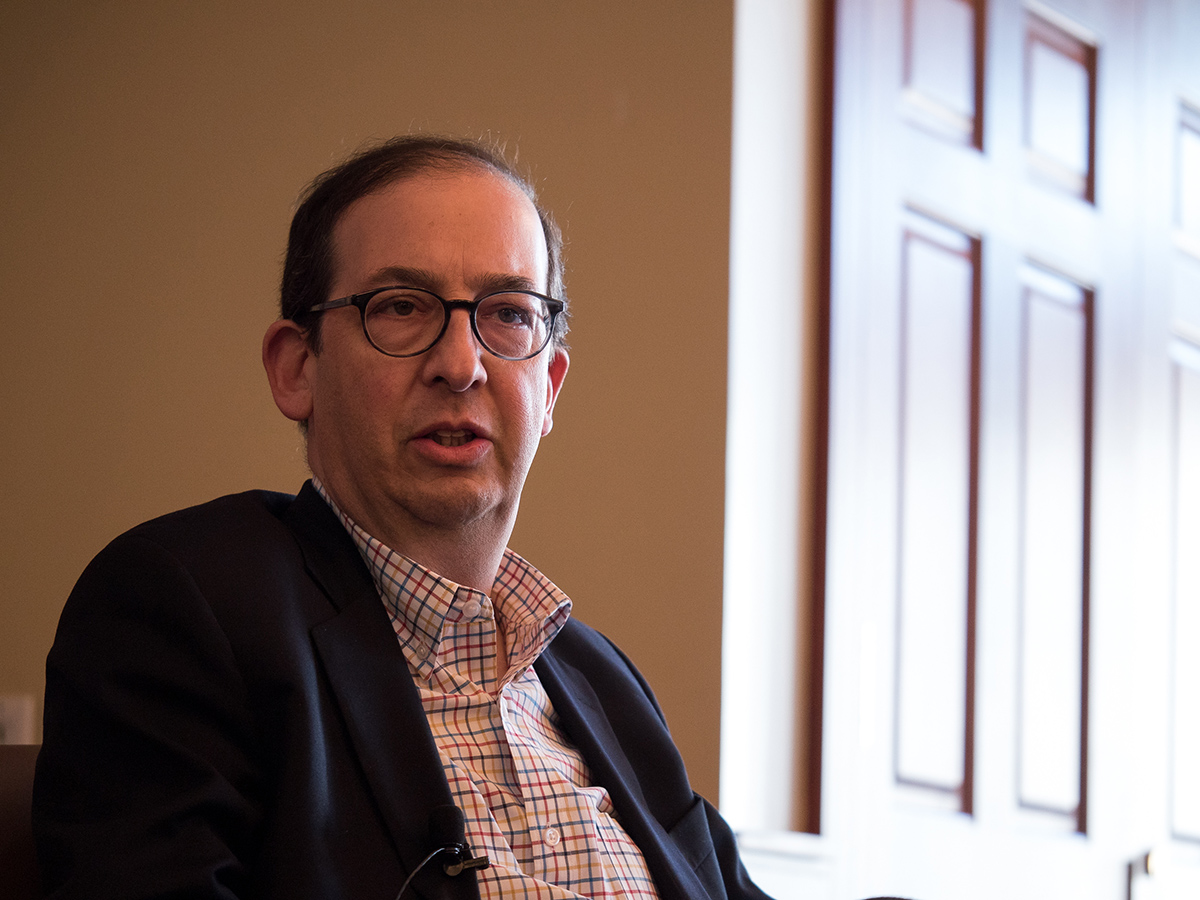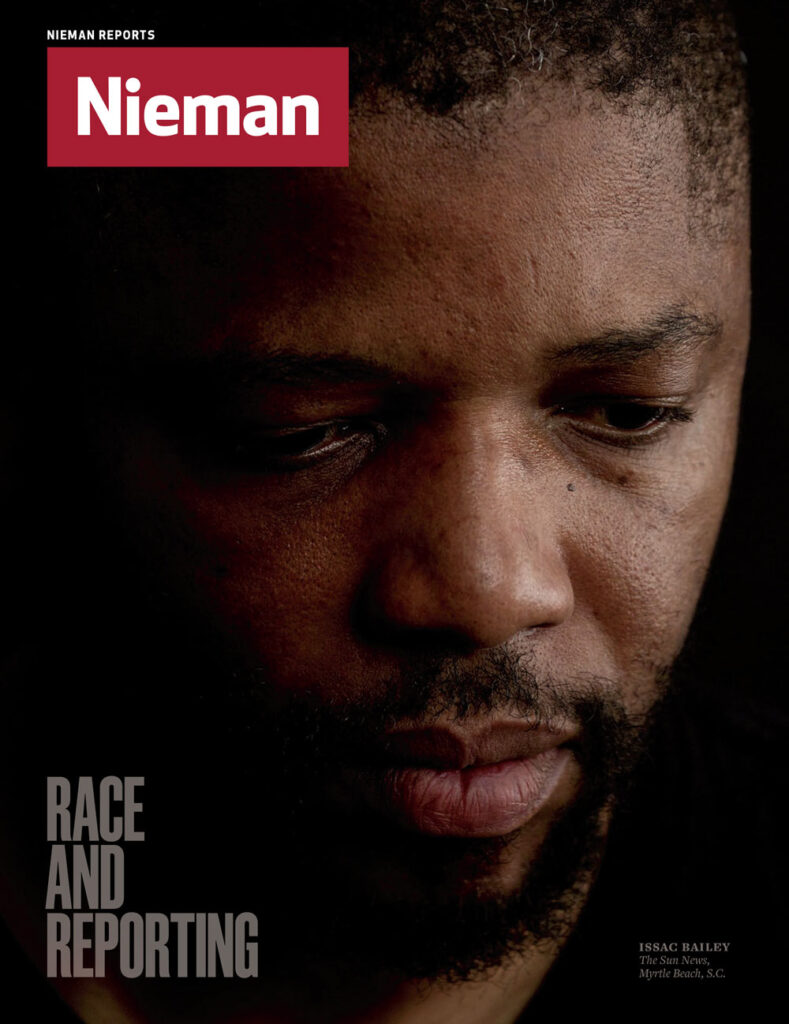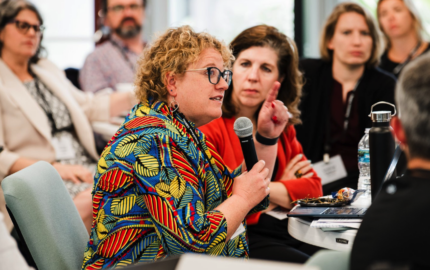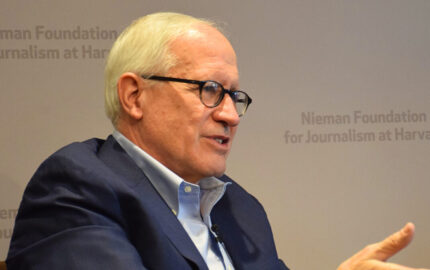Richard Tofel, president of ProPublica since 2013, joined the nonprofit investigative news organization as general manager at its founding in 2007. Two years after it started publishing, ProPublica's Sheri Fink, in collaboration with The New York Times Magazine, received a 2010 Pulitzer Prize for coverage of the life-or-death decisions doctors in New Orleans made during Hurricane Katrina. The following year two ProPublica staffers won a Pulitzer for exposing Wall Street practices that contributed to the nation’s financial crisis.
Previously Tofel was assistant publisher at The Wall Street Journal and held a number of corporate jobs at Dow Jones & Co., the Journal’s parent company. He’s written several books, including “Restless Genius: Barney Kilgore, The Wall Street Journal, and the Invention of Modern Journalism,” published in 2009.
Tofel spoke at the Nieman Foundation in April in conversation with Wahyu Dhyatmika, a 2015 Nieman Fellow. Edited excerpts:
On measuring ProPublica's impact
Our mission is to spur change through journalistic means. We try to quite rigorously track all the pick-up of our major work and what kind of change we are producing. There’s a big temptation to say that a Congressional press release is change, a news conference is change, or a hearing is change. It isn’t. It can lead to change, although frankly, most of the time it doesn’t. Change is when something actually changes. Sometimes it takes a very, very long time.
We wrote a series published in the Sunday Los Angeles Times, our first or second year in business, about the lax oversight of nursing in California. Arnold Schwarzenegger was then the governor. The next morning he reportedly walks in brandishing the paper and says, “I want this fixed today.” They come back to him an hour or two later and say, “Can’t be done.” He says, “Why?” They say, “Because it turns out you appointed the entire nursing board.” Because he was Arnold Schwarzenegger he says, “I don’t care, fire them,” and that afternoon, boom, half the board is gone. Our lead funder Herb Sandler goes, “This is great. We published this thing, and the next day it’s all fixed.”
We go, “Herb, it doesn’t work that way. When you don’t have action heroes as political chief executives, it’s less frequent."
The example on the other end of the spectrum is the story we did about three and a half years ago that ran on the front page of The Washington Post. It proved that the presidential pardon system in this country is deeply racially biased. It was a lot of hard work and took us a long time. We were really thrilled with it, and Steve Engelberg, who’s now our editor in chief, and I were quite smug. We go, “This is a layup.” The presidential pardon power may be the only, essentially royal prerogative in the Constitution. It is completely unreviewable, and the president has total power. But, three and a half years later, we are still waiting. I think this will eventually change, and we clearly lit the fuse that’s going to change it.
On the importance of partnerships
Now, with that presidential pardon story, we did learn something about framing that speaks to reach. We wrote that story as a reform story. There aren’t really two sides to whether there should be racial bias. The second time we came back at the subject, it was a story about a guy named Clarence Aaron, and some misconduct in the pardons office, in which information was withheld from President Bush’s staff, resulting in Aaron not getting pardoned. That time, we pitched this story quite directly to the black community—in terms of how we used social media, how we used our public relations efforts.
In the mainstream press it got less attention, but in the African-American community it got quite a lot more. I think the president began to sense in the spring of 2012 that this could turn into a problem with the base, and he eventually commuted Clarence Aaron’s sentence in 2013.
If we’d been super smart, I guess we would have figured that out in the first place. Instead of going to The Washington Post, maybe if we’d given this whole thing to BET [Black Entertainment Television] the president would have had to fix it in the first place. I don’t know but that is part of how we think about it, and you try to get smarter over time.
One thing we did learn early on is that sometimes reach really matters. The New York Times, The Washington Post, and NPR are great and frequent partners of ours. But sometimes a niche player can make a very big difference with the story.
We did some reporting a few years ago on brain injuries to the troops in wars and some unfairness in the way the Pentagon was dealing with brain injuries. We did that story with NPR. It got a lot of reach and got the Pentagon plenty annoyed, but they weren't doing anything about it. It’s because they don’t like to change. Then we had the opportunity to partner on those stories with Stars and Stripes. At that point, the joint chiefs completely turned around. It didn’t make them angry, it made them concerned, because they were being challenged at the level of every PX around the world. The mass of enlisted personnel was reading the story. That’s not a huge number of people—it’s nothing like the audience of NPR—but it’s all of their people. We’ve had similar experiences with The Chronicle of Higher Education, and other fairly small publications that reach perfect audiences.
On joint reporting projects
What’s it going to take to get editors at different reporting partners comfortable? It’s something different for every editor. You have all seen this in your careers. You write exactly the same story. You submitted it to editor A, and you get one reaction, and with editor B, you get another. Top editor A wants to do some kinds of things to it, and top editor B wants to do different things.
On journalism vs. advocacy
Our journalism is different from advocacy because we start with questions and we end with answers, instead of starting with answers and ending with questions, and also because we just use journalistic means. We don’t lobby. We report. The one place where I think some traditional journalists get very uncomfortable is when we get to the end of it. We’ve reported it out, and we think we’ve proven it. We then don’t hesitate to campaign about it.
One percent of the philanthropic dollars in the U.S. would fund public radio and TV, and 10 outlets the size of ProPublica
On achieving sustainability
At the outset, our initial funders, the Sandler Foundation, provided 85 to 95 percent of the money. We had them down last year to a third of the money. This year it’ll be a quarter. In the long run, I’d like to get it to about 15 percent. I think we can get there. Last year we had about 40 funders of $50,000 or more. We had 2,600 donors altogether, if you include small donors.
We have built up a reserve of $5 million, but we think a healthy organization should have a reserve of funding for at least a year. We'll spend more than $12 million this year, so we’re not anywhere near where I would like us to be in the long run. We’ve run operating surpluses every year, so we are slowly getting there. Occasionally, we find somebody who’s willing to contribute money to our reserve, but it's very rare.
When the next recession happens, there’s going to be a shakeout in American newspapers. I think you will see scores, maybe hundreds of newspapers, that will either disappear or go to one day a week in print and dramatically reduce digital operations by the other side of the recession.
What does that mean for us? We’ve never had a down year. I expect that when we get to the recession, we probably will. We’ll have to manage through that.
On sources of funding
Small dollars—both in the mail and online—came to almost half a million dollars for us last year, so that’s not trivial. Probably the next best thing is rich people giving you large sums of money. Living donors operating through family foundations are far preferable, in the long run, to institutional foundations, which are staffed by people whose job it is to give away other people’s money. The reason is that in an institutional foundation, if they don’t change what they’re doing every once in a while, they don’t need their staff.
Individuals are exactly the opposite. By and large, it’s my experience that when you think about giving money away you find things that motivate you, that touch you, that you’re passionate about. If they remain at the same level of quality that moved you in the first place, you may write them a check for 20, 40 years in a row, until you die.
Then we come to the issue of earned income. We've taken advertising for four years. Our monthly pageviews were up almost 60 percent in the first quarter of this year. The advertising revenue was down. Why? Because of supply and demand. The demand for advertising is not rising at anywhere near the number of pages that are being created every day.
It would be great to get readers to pay. I think it's very, very difficult, unless you have an enormous amount of highly differentiated, high-quality content. I think the surest proof of this is that digital subscriber growth at The New York Times—which probably has the highest amount of high-quality, highly differentiated content—seems to have flattened out at levels above 800,000 people. This is happening in a country of 320 million people.
Where we draw the line is we let funders support beats—like education, or even some nontraditional beats such as inequality and race—but that’s it. When the Carnegie Corporation supports our beat on education, they have no idea that we’re going to use it to write about restraints in public schools for a year.
One of the points made in the Federal Communications Commission’s report, “The Information Needs of Communities: The Changing Media Landscape in a Broadband Age,” was that one percent of all the philanthropic dollars in America would throw off enough money to fund many initiatives, including nonprofit news organizations. When I took a sharp pencil and translated it, that number would have been enough to pay for all the public television stations, all of the public television programming, all the public radio stations, all the public radio station programming, and 10 organizations the size of ours. That’s one percent. If we can eventually convince Americans to do that, we'll all be fine.




